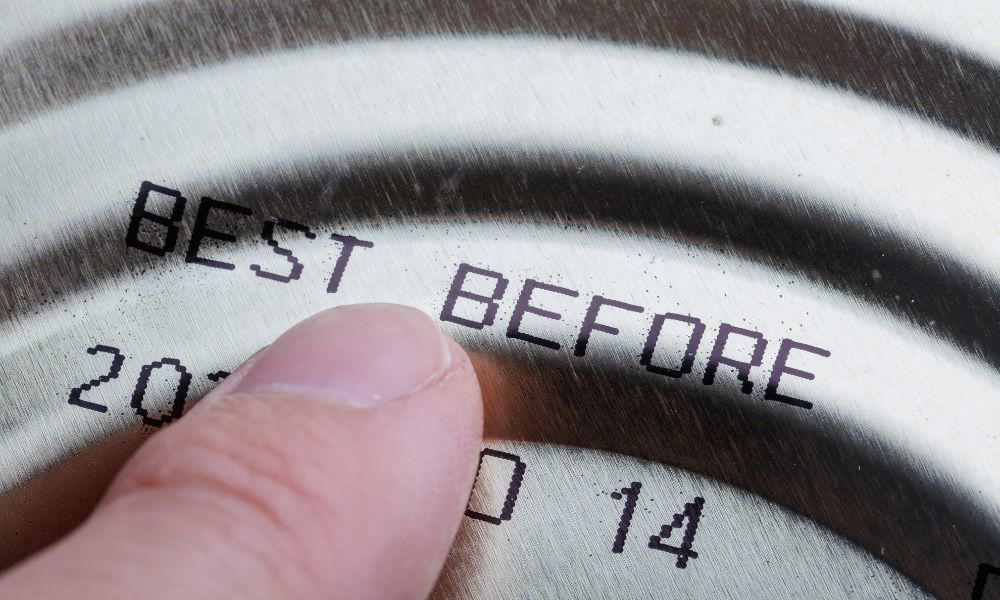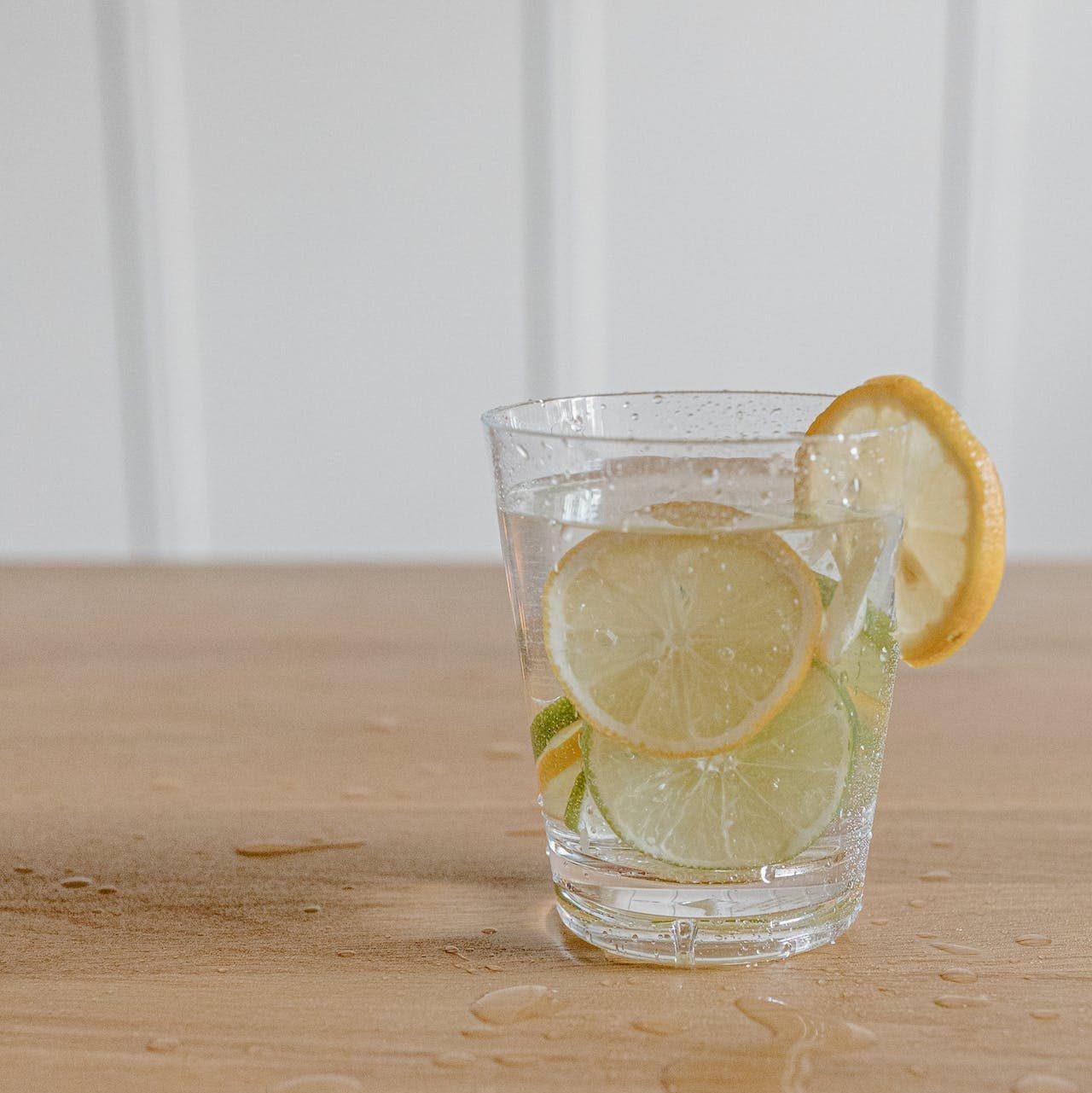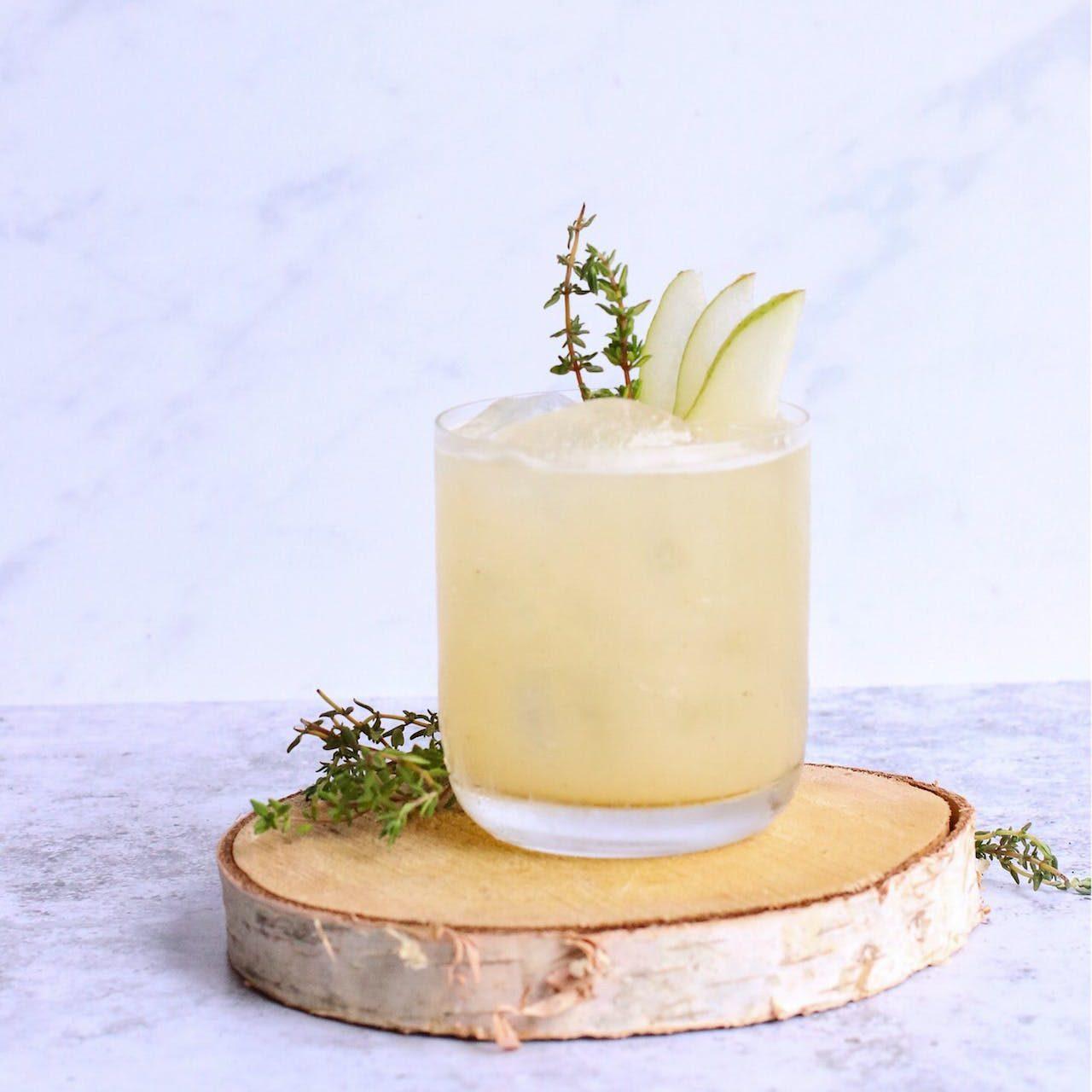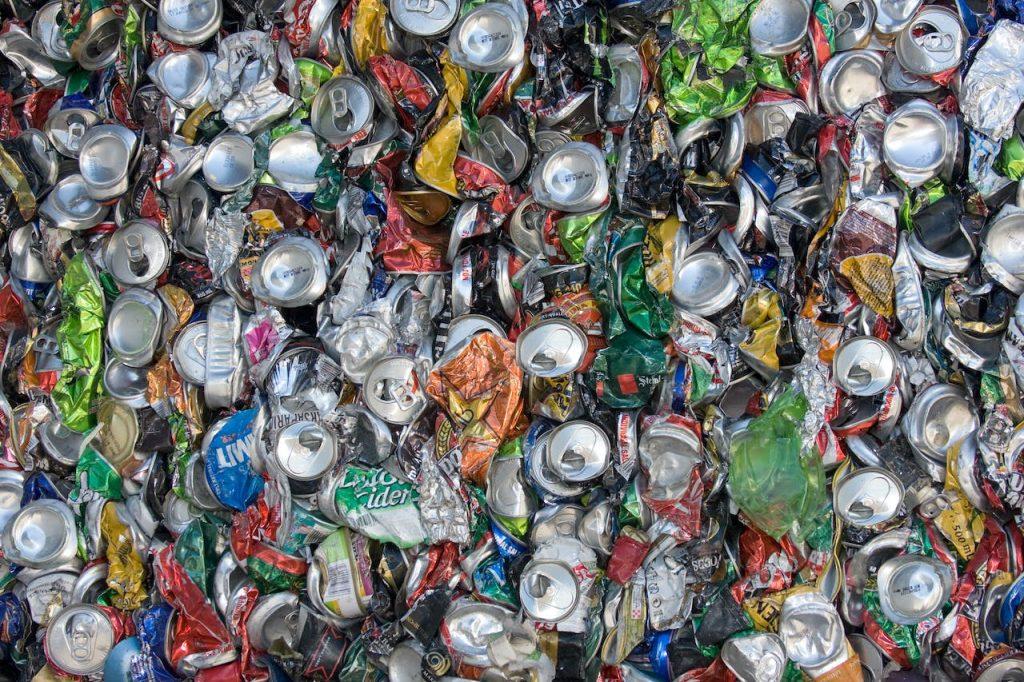Ah, the Costco siren song. Luring you in with mountains of bubbly bliss for the price of a latte. We’ve all fallen for it, haven’t we?
Months later, though, you stumble upon a dusty can lurking in the pantry, and the inevitable question arises: “Is this still even drinkable?” Fear not, fellow seltzer enthusiasts, for this is your deep dive into the world of seltzer, bubbles and all!
[adthrive-in-post-video-player video-id=”lpXy9j3I” upload-date=”2024-01-07T07:05:54.000Z” name=”Does Seltzer Expire?” description=”” player-type=”default” override-embed=”default”]
🍋 What Exactly is Seltzer?
Think Mother Nature’s soda fountain! No fancy ingredients, just water infused with carbon dioxide for those delightful dance parties on your tongue.
Companies may add a splash of fruit or a dash of juice, but at its core, seltzer is pure, sparkling refreshment. Feeling adventurous? All you need is water, CO2, and a pressure-loving container – boom, homemade fizz for the win!
Seltzer’s close cousin hard seltzer adds a splash of alcohol to the mix, creating a refined drink for the 21+ crowd. Popular brands like White Claw and Truly offer fruit-flavored fizziness with about 100 calories and 5% alcohol per can – lighter than beer and tastier than vodka!
| Seltzer | Plain sparkling water |
| Hard Seltzer | Seltzer with alcohol added, around 5% ABV |

📜 History of Seltzer
Believe it or not, those first tingles trace back to the late 1700s! Seltzer emerged in Germany, captivating European aristocrats seeking a touch of health (fancy, right?).
By the 1830s, it crossed the Atlantic, dispensed in pharmacies as “soda water” for digestion or a hot day’s refreshment. Then came the early 1900s, and Jewish immigrants arrived with their single-serving “siphon” bottles, sparking a vibrant street vendor culture in NYC.
“Stop by for a bubbly shot of seltzer!” these iconic characters would call, defining decades of city life. But mass-produced bottles eventually eclipsed these hand-bottled rituals, leaving the vintage fizz feeling forgotten.
Not for long, though! Artisanal seltzer brands are reviving those bygone days, proving that seltzer’s bubbly magic never truly goes flat.
The “soda siphon” effect: When you open a can of seltzer, the rapid release of carbon dioxide creates a miniature sonic boom, hence the audible hiss. This is similar to the principle behind a soda siphon.
🧐 To Sip or Not to Sip: Does Seltzer Expire?
Rummaging through a forgotten backroom storage, I spot a fruity seltzer can way past its prime. Covered in dust, the pull tab labels it best by July 2022 – it’s clearly expired. But would it still be safe to drink?
When it comes to food and beverages, expiration dates indicate quality, not necessarily safety. They signify the last day a company guarantees peak deliciousness.
An expired seltzer likely won’t make you sick – unless there’s severe corrosion or contamination. Light corrosion is usually fine as the contents of the cans aren’t directly in contact with the aluminum. However, significant corrosion causing leaks or breaches in the can lining could be a hazard. So while that dusty can won’t have quite the same lively lip-puckering bite, it’s probably still potable.
For optimal taste and fizz factor, I stick to seltzer cans within several months of the packaging date. But drinking one a few months past its prime (especially if refrigerated) usually just means somewhat flat flavor. Not a safety hazard – but personally, I’ll pass on flat seltzer! 🙅♂️

📅 Unopened Seltzer Shelf Life
In many ways, an unopened can of seltzer is like a time traveler – able to withstand the test of time before bringing refreshing fizziness to thirsty drinkers.
If stored properly at room temperature, seltzer lasts 5-6 months before losing its lively carbonation. And refrigeration can extend an unopened seltzer’s shelf life to about a year – that’s sparkly freshness lasting over 365 days! I found keeping seltzer cans out of direct sunlight in the Boat Basin Cafe’s cool basement was the best way to maintain bubbly bliss.
So what exactly causes a seltzer to go flat? Within each can, carbon dioxide gas keeps those delightful fizzies bouncing. But over time, CO2 molecules can slowly seep out through microscopic pores in the container. Eventually, enough Seltzer Soul escapes and flatness sets in.
Other gases present during manufacturing or sealing can also cause carbonation loss. And factors like transportation and storage temperature play a role too – heat speeds the escape of CO2 while cool temps preserve the fizzy essence.
| Room Temperature | 5-6 months |
| Refrigerated | Up to 1 year |
Hidden factors affecting seltzer longevity
- Can lining: The type of lining inside the can significantly impacts carbonation retention. Some newer linings are designed to be extra gas-tight, allowing seltzer to stay bubbly for even longer.
- Altitude: Living at high altitudes can actually make your seltzer go flat faster due to the lower atmospheric pressure. So, mountain dwellers, take note!
- Fruit flavors: Seltzers with added fruit flavors may lose their fizz and aroma quicker than plain seltzer. This is because the sugars and acids in the fruit can interact with the carbon dioxide, causing it to escape more readily.
🍾 Opened Seltzer: A Race Against Time
Cracking open a can unleashes a magical battle against the clock. Once exposed to air, carbon dioxide starts its grand escape, day by day diminishing the flavor and fizz. For peak enjoyment, finish an opened seltzer within 2 to 4 days.
Storing them in sealed containers can help slow down the fizz clock, but remember, opened seltzer’s lifespan maxes out around a week – drink up!

🕵️♂️ Spotting an Expired Seltzer
| Check Date | On bottom rim or pull tab label |
| Inspect Container | Bulges, dents, rust, stickiness can accelerate expiration |
| Check Carbonation & Scent | Flatness and faded aroma indicate expired freshness |
Luckily, seltzer cans provide plenty of clues indicating freshness. Playing soda sleuth by checking labels, dates, container condition and contents can reveal if a questionable can is still consumable.
First check the expiration or Best By date printed in small type on the bottom rim or pull tab label. Cans more than 6-12 months past this timeframe likely contain flat, flavorless fizz.
Next, scrutinize the can’s condition. Bulges, dents, rust, sticky residues or any other defects can compromise integrity, causing quicker carbonation loss.
Pop the tab and inspect seltzer visually and aromatically. Flat, faded carbonation plus weak, stale seltzer scents signal expired freshness. But if lively bubbles are visible and it smells vibrant, cheers to sipping!
🥤 Safe Sipping: Is Expired Seltzer a No-Go?
Working the register one slow morning, a scruffy regular presented a tattered grocery bag filled with dusty, expired cans. “Think these are still safe to drink?” he asked hopefully. Yikes! 😬
While the taste of flat, aging seltzer might not be too thrilling, safety is seldom a concern. Unless cans show serious structural damage or visible contamination, the main worries with expired cans are lackluster flavor, scent and fizz – not hazardous health effects.
However, if you spot mold, rust, odd textures or powerful rancid smells, err on the side of caution – properly discard instead of drinking!
Unexpected uses for expired seltzer:
- Weed killer: Believe it or not, flat seltzer can be used as a natural weed killer. The acidity can harm delicate weed seedlings while not affecting most established plants.
- Hair rinse: The minerals in seltzer can add shine and volume to your hair. Simply pour some flat seltzer over your locks after shampooing and conditioning.
- Cleaning agent: Flat seltzer can be used to clean windows, mirrors, and stainless steel surfaces. The acidity helps cut through grime and leaves a streak-free finish.
So for that desperate regular begging to buy expired stock? While legally I couldn’t sell past-date cans, I furtively slipped him two from my basement stash – flat but harmless to consume! 🤐
🏠 Storage Secrets: How to Keep Your Seltzer Singing
Want to keep your seltzer singing its bubbly tune for as long as possible? I learned a few insider cafe tips:
- Shield from Light: Sunlight degrades flavors and hastens carbon dioxide escape. Stash your cans in cool, dark havens like cellars or fridges.
- Keep Cans Chilled: Refrigeration slows down carbonation loss and locks in that straight-from-the-source flavor. Think of it as a seltzer spa!
- Seal Opened Cans: Air is the enemy of fizz. Pour unfinished portions into airtight containers like glass bottles to slow the clock on flatness.
- Clean Container Exteriors: Sticky residues can damage the can’s integrity and lead to early fizz faltering. Give your cans a quick wipe-down to keep them in tip-top shape.
These simple tips helped keep our Boat Basin Cafe seltzer bubbling with life, and they’ll do the same for yours! Just remember, once cracked open, drink your seltzer like it’s your last dance with a disco ball – embrace the fizz before it fades!
📚 Seltzer in Culinary Creations: Beyond Plain Sipping
Seltzer isn’t just for solo sipping! Its bright bubbles and neutral flavor make it a culinary chameleon:
- Cocktails (21+ only!): A vodka soda with fresh citrus slices is a summer classic. Or get creative and blend seltzer with syrups, juices, or herb infusions for next-level mocktails – your imagination’s the limit!
- Baking and Pancakes: Lightly sweet quickbreads get a perfect lift from fizzy favorites. Pancakes, cakes, and crepes all rise higher with a splash of bubbly.
- Deglazing Savory Pans: Want to add depth and richness to your pasta, stir-fries, and sauces? Deglaze your pans with plain or flavored seltzer – it’s a game-changer!
From mixology to baking, don’t relegate seltzer to just solo sipping. Uncork those food and drink recipes and start pouring!

♻ Cheers to Sustainability! Raise a Glass to Recycling!
Aluminum cans are recycling rockstars! Thanks to their ideal properties, they get a new life as fresh cans roughly 60 days after being recycled. That’s not just good for your wallet, it’s good for the planet:
- Energy Savings: Recycling aluminum saves more than 90% of the energy needed to produce brand new cans, reducing dependence on fossil fuels and saving millions of barrels of oil each year.
- Reduced Emissions: Aluminum manufacturing generates significant greenhouse gas emissions. Recycling cuts those emissions dramatically, minimizing our environmental impact.
So, by responsibly tossing your empty seltzer cans in the recycling bin, you’re not just decluttering your pantry, you’re helping keep thousands of tons of aluminum out of landfills and reducing your carbon footprint. Now that’s something to fizz about!

🎉 Conclusion: Keep the Bubbles Bubbling
As the bittersweet last day at Boat Basin Cafe arrived, I gazed nostalgically at the seltzer fridge that had fueled so many lively memories. No longer would I fill cups with fizzy refreshment for thirsty tourists and quirky regulars – but the bubbly spirit of the cafe would stay with me.
Hopefully these insider tips on handling and storage will help your seltzers maintain maximum fizz factor and flavor nuance. And if one day you happen to pop open a passed-date can, fear not – just sip safely and savor whatever lingering bubbles it has left!
Now if you’ll excuse me, it’s time to enjoy a nice cold seltzer in honor of the Boat Basin while sharing fond stories with friends new and old! 🥤 Who’s in?
❓FAQs: Your Pressing Seltzer Questions Answered
Can you use expired seltzer in a recipe?
You can safely use expired seltzer in recipes. While flat and potentially diminished in flavor, seltzer within its best-by date is still safe to ingest barring signs of contamination. The main concern is lack of fizz, rather than food safety issues. So go ahead and give that flat, forgotten seltzer new life in bubbly baked goods, salad dressings, and more – just avoid baking where active carbonation is essential for rise.
Does seltzer expire in the fridge?
An unopened seltzer stored in the fridge can last up to a year before notable flavor/carbonation loss. Even when refrigerated after opening, seltzer is best consumed within 4 days.
Does hard seltzer expire?
Similar to regular seltzer, unopened hard seltzers typically last 6 months (room temp) to 1 year (refrigerated). After opening, 2-4 days is ideal for taste. Expired hard seltzer is still generally safe to ingest.
